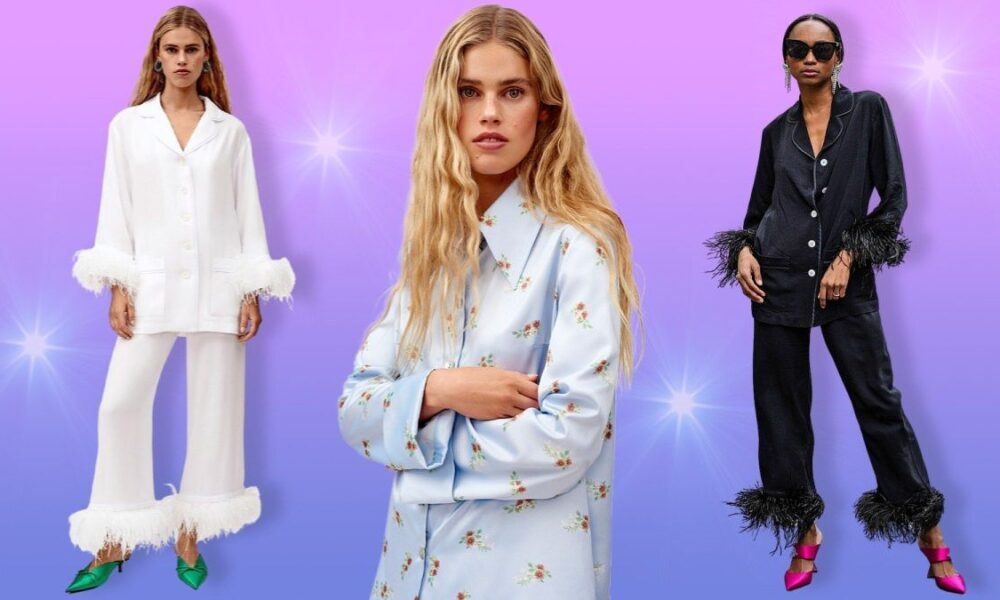Introduction
Pajamas, often referred to as PJs or sleepwear, are an essential PYJAMASPAPPER part of our daily lives. They provide comfort, relaxation, and a sense of personal style even during bedtime. From classic cotton sets to luxurious silk designs, pajamaspapper have evolved significantly over time. This article explores the history, types, benefits, and cultural significance of pajamaspapper, along with tips for choosing the perfect pair.
The History of Pajamaspapper
The word “pajama” originates from the Hindi term pāy-jāma, which means “leg garment.” It was adopted into English during British colonial rule in India, where loose-fitting trousers paired with a tunic were commonly worn for comfort in warm climates.
Early Origins
- Ancient Civilizations: Early sleepwear can be traced back to ancient Rome and China, where people wore tunics or robes to bed.
- 18th-19th Century: In Europe, nightshirts and nightgowns were the norm before pajamas became popular.
- 20th Century: Pajamas gained widespread acceptance in the Western world as more practical and comfortable than traditional nightshirts.
Modern Pajamas
Today, pajamas come in countless styles, fabrics, and designs, catering to different preferences and climates. The rise of loungewear has also blurred the lines between sleepwear and casual home attire.
Types of Pajamaspapper
Pajamas are available in various styles, each offering unique benefits. Here are some of the most popular types:
1. Classic Two-Piece Pajamas
- Consist of a button-up or pullover top with matching pants.
- Made from cotton, flannel, or silk.
- Ideal for all seasons, depending on fabric thickness.
2. Nightshirts and Nightgowns
- Loose, flowing garments, often made of cotton or satin.
- Popular among those who prefer unrestricted movement.
3. Onesies and Footie Pajamas
- One-piece sleepwear with attached feet for extra warmth.
- Popular among children and adults who enjoy cozy, full-body coverage.
4. Short Pajama Sets
- Consist of a short-sleeved top and shorts.
- Perfect for hot weather or summer nights.
5. Luxury Pajamas (Silk, Satin, Bamboo)
- High-end materials like silk and bamboo for a soft, breathable feel.
- Often designed with elegant patterns and embroidery.
6. Thermal and Flannel Pajamas
- Designed for cold weather with insulating fabrics.
- Often feature plaid or seasonal patterns.
Benefits of Wearing Pajamaspapper
Beyond just being comfortable, pajamas offer several advantages:
1. Improved Sleep Quality
- Wearing dedicated sleepwear signals the brain that it’s time to rest.
- Breathable fabrics regulate body temperature for better sleep.
2. Hygiene and Skin Health
- Changing into clean pajamas reduces exposure to dirt and bacteria.
- Soft fabrics prevent skin irritation.
3. Comfort and Relaxation
- Loose-fitting pajamas allow for unrestricted movement.
- Cozy materials promote relaxation after a long day.
4. Personal Style Expression
- Pajamas come in various colors, patterns, and designs.
- Matching sets can make bedtime feel more luxurious.
Cultural Significance of Pajamaspapper
Pajamas hold different meanings across cultures:
Western Countries
- Often associated with relaxation and bedtime routines.
- Matching family pajamas are popular during holidays.
South Asia
- Traditional pajamas (loose trousers) are worn as daily attire in some regions.
- Often paired with a kurta (long tunic).
Japan
- The yukata (a light kimono) is worn as sleepwear or loungewear.
- Pajama-inspired streetwear has become trendy.
How to Choose the Perfect Pajamaspapper
Selecting the right pajamas depends on personal preferences and needs. Here’s a quick guide:
1. Fabric Matters
- Cotton: Breathable and ideal for all seasons.
- Silk/Satin: Luxurious and smooth but less breathable.
- Flannel: Warm and cozy for winter.
- Bamboo: Eco-friendly and moisture-wicking.
2. Consider the Fit
- Loose Fit: Better for airflow and comfort.
- Fitted Styles: Preferred by those who move a lot in sleep.
3. Seasonal Choices
- Summer: Opt for lightweight, short-sleeved sets.
- Winter: Choose thermal or fleece-lined pajamas.
4. Style Preferences
- Classic, modern, fun prints, or minimalist designs.
- Matching sets for a polished look.
The Rise of Pajamaspapper Fashion
Pajamas are no longer just for sleeping—they’ve become a fashion statement.
1. Pajama Dressing Trend
- Celebrities and influencers wear silk pajama sets as stylish outfits.
- High-end brands like Gucci and Versace have introduced luxury sleepwear collections.
2. Work-from-Home Comfort
- With remote work, many people opt for stylish yet comfortable loungewear.
- Pajama-style pants with presentable tops are a popular choice.
Eco-Friendly Pajamas
As sustainability becomes more important, eco-conscious sleepwear options are growing:
- Organic Cotton: Grown without harmful pesticides.
- Bamboo Fabric: Naturally antibacterial and sustainable.
- Recycled Materials: Some brands use recycled polyester for sleepwear.
Conclusion
Pajamas have come a long way from their origins in South Asia to becoming a global sleepwear staple. Whether you prefer classic cotton sets, luxurious silk pajamas, or cozy onesies, the right sleepwear can enhance comfort, improve sleep, and even make a fashion statement. By choosing the right fabric, fit, and style, you can transform your bedtime routine into a more enjoyable and restful experience.


